PEIOptometrists was a website dedicated to the Prince Edward Island Association of Optometrists. The organization focused on providing high-quality primary eye care to the residents of Prince Edward Island.

Overview
PEIOptometrists was committed to diagnosing eye issues and, in some cases, detecting signs of chronic diseases like diabetes or high blood pressure. Routine examinations were highly encouraged to prevent and identify problems early. In addition to these services, PEIOptometrists also offered several specialized programs and collaborations.
History
The Prince Edward Island Association of Optometrists was incorporated by chapter 13 of the Acts of the Legislature in 1922. Initially known as the Prince Edward Island Optometric Association, the organization worked diligently to promote professional interests, improve proficiency, and foster relationships with other associations.
Objectives
PEIOptometrists aimed to:
- Promote the professional interests of members
- Improve proficiency in all matters of professional practice
- Foster relations with associations in other provinces
- Encourage continuing education
Services
Eye Examinations
PEIOptometrists.ca provided comprehensive eye examinations, including the prescription, fitting, and application of glasses or contact lenses. They also supervised therapy for visual health improvement and made necessary referrals to other health practitioners.
Special Programs
Eye See…Eye Learn® Program
This program offered free eye exams and glasses to kindergarten children, ensuring that all children had access to eye care, regardless of economic status. The Eye See…Eye Learn® program began in January 2015.
Diabetic Eye Exams
PEIOptometrists.ca provided coverage for diabetic eye exams, including both full and partial examinations. Coverage frequency varied between patients with type 1 and type 2 diabetes.
Red Eye and Dry Eye Visits
Appointments related to red eye from infections, allergies, watery eyes, itchy eyes, or dry eyes were covered by Health PEI, though the province did not cover any subsequent treatment or standard eye exams.
Leadership
PEIOptometrists.ca’s executive leadership consisted of:
- President: Dr. Lester Jinks
- Vice-President: Dr. Jayne Toombs
- Secretary: Dr. Alanna Stetson
- Treasurer: Dr. Joe E. Hickey
- CAO Representative: Dr. Angela Arsenault
Partnerships
PEIOptometrists worked in collaboration with Health PEI, VisionTech Labs PEI, and Viva Canada to promote eye health and vision awareness.
Conclusion
PEIOptometrists played a vital role in providing eye care services to the community of Prince Edward Island. Its dedication to excellence in eye care, special programs for children, and diabetic patients, coupled with its strong leadership and collaboration with Health PEI, marked a significant contribution to the field of optometry in the region. The organization’s continuous strive to achieve its objectives was both in the interest of the public and its members, making PEIOptometrists.ca a prominent entity in the healthcare landscape of Prince Edward Island.
